Moths
Butterfly or Moth Butterflies and moths are closely related. A distinctive visual difference is their antennae: the butterfly’s are slender with a club-like end; the moth’s are either feathery or whiplike. Butterfly bodies are slender and smooth, while moths are stout and furry. Most butterflies are diurnal and most moths, nocturnal.
There certainly is a rich diversity of moths to be found, especially flying around lights at night. Discovering them in their own natural habitat is a little more work.
One can often tell the sex of a moth by its antennae. The female’s antennae are whiplike; the male’s are feathery. Examples of each appear below. The male’s feathery antennae are used to detect the female pheromones and so help find a mate. This is particularly true for the nocturnal moths, yet some moths are active during the day. Diurnal males find a mate by sight.
The Zoology Department at U.B.C. provides a guide to the Lepidoptera Families (both Moths and Butterflies) of British Columbia. It is written for the scientist, yet it gives an overview of the bewildering array of these fliers. Images accompanying that document are presented in the standard spread–wing dorsal view. This approach gives the maximum visibility for both wings, but it is rarely the way a living moth will appear in nature. All the pictures, below, were taken of moths just as they were found.
This material is under development. Many species here are unidentified and others are only marginally identified. So, captions are tentative.
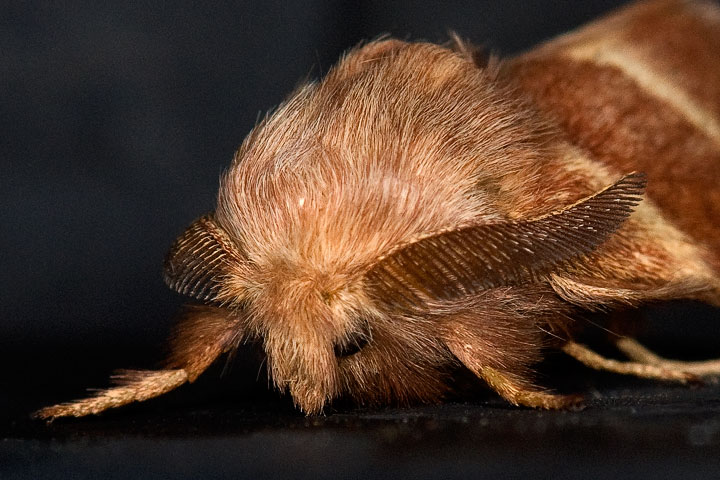 This is the moth of the Northern Tent Caterpillar. This is the species whose caterpillars build those large tent–like cocoons on trees. This view of the moth reminds me of a muskox.
This is the moth of the Northern Tent Caterpillar. This is the species whose caterpillars build those large tent–like cocoons on trees. This view of the moth reminds me of a muskox.
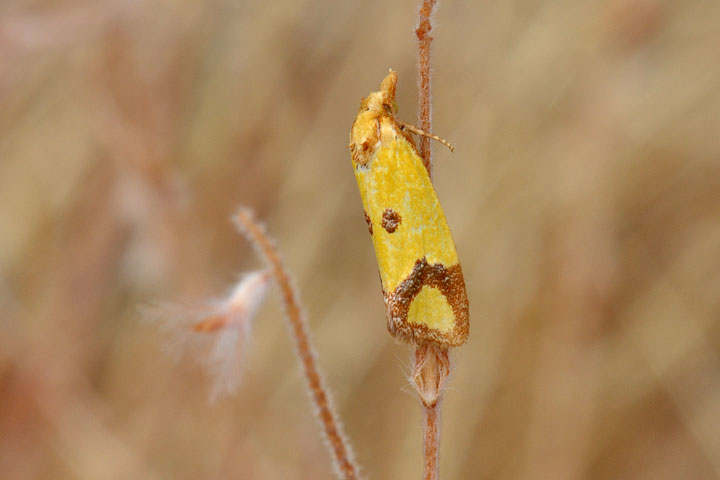 The sulphur knapweed moth is a tiny European import used as a biological pest control against knapweeds. Indeed, this one was seen in the vicinity of some spotted knapweer.
The sulphur knapweed moth is a tiny European import used as a biological pest control against knapweeds. Indeed, this one was seen in the vicinity of some spotted knapweer.
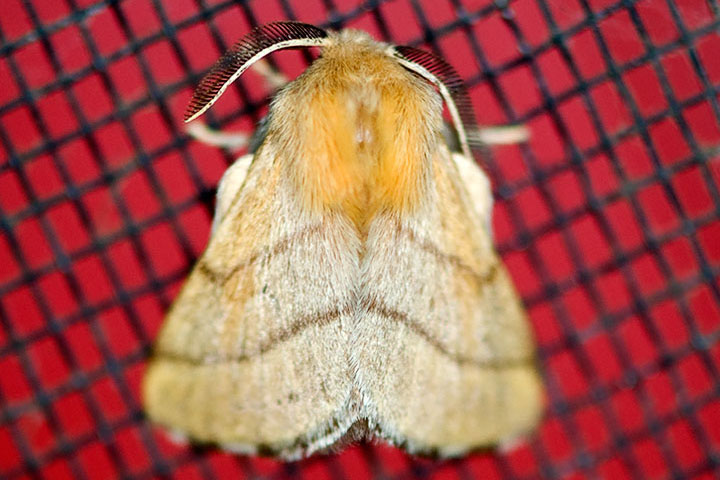 This is the moth of the Forest Tent Caterpillar. This species builds smaller cocoons in trees rather than the large tents. Notice that the wing strips are dark, while on the Northern, they are light.
This is the moth of the Forest Tent Caterpillar. This species builds smaller cocoons in trees rather than the large tents. Notice that the wing strips are dark, while on the Northern, they are light.
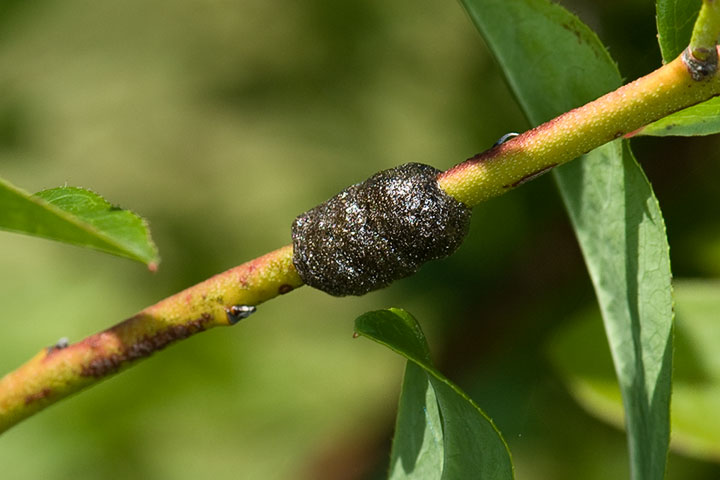 An egg mass of the Forest Tent Caterpillar on a willow bush.
An egg mass of the Forest Tent Caterpillar on a willow bush.
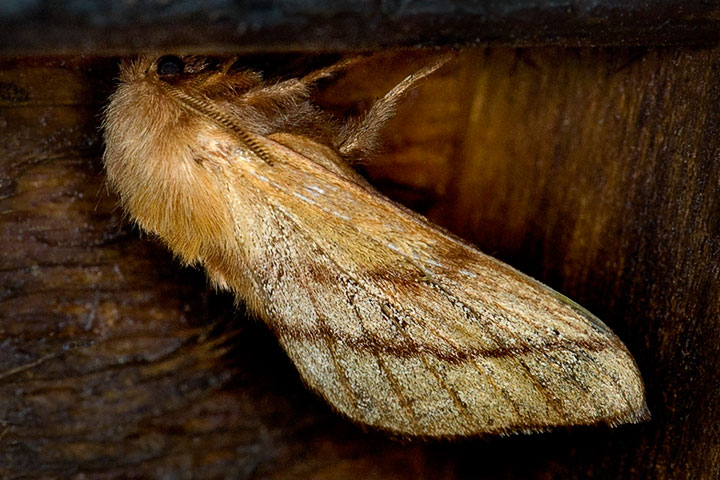 The moth of the Forest Tent Caterpillar has dark stripes on its wings.
The moth of the Forest Tent Caterpillar has dark stripes on its wings.
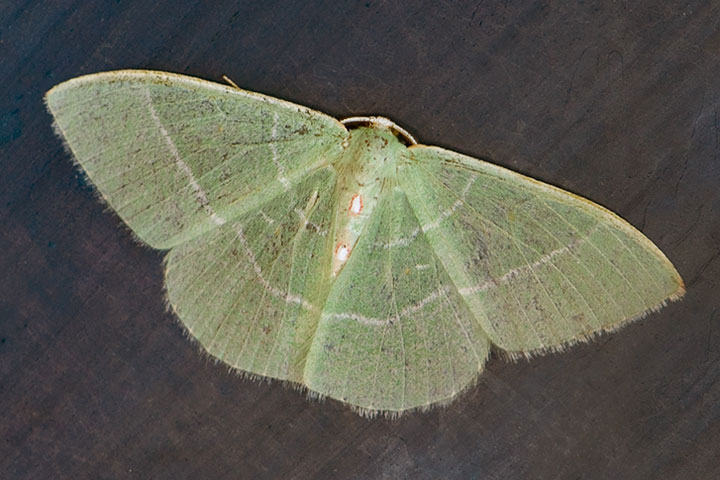 This moth is in the Geometridae family, a Nemoria glaucomarginaria.
This moth is in the Geometridae family, a Nemoria glaucomarginaria.
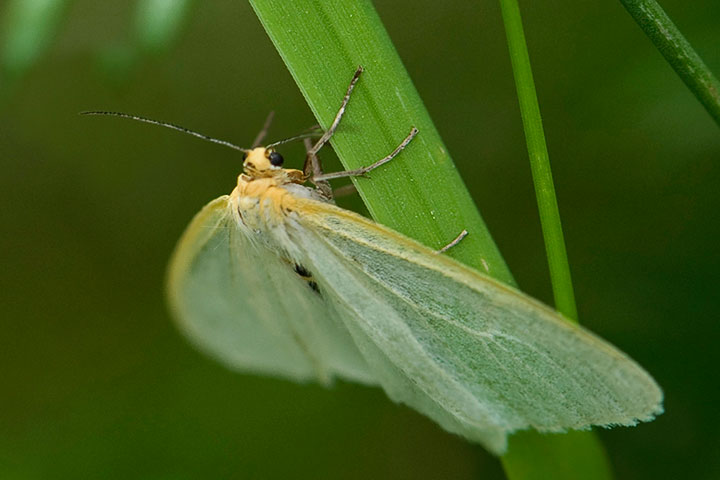 A tiger moth belonging to the species Cycnia tenera (Delicate cycnia). It is a widespread species and nocturnal as well. It is attracted to lights.
A tiger moth belonging to the species Cycnia tenera (Delicate cycnia). It is a widespread species and nocturnal as well. It is attracted to lights.
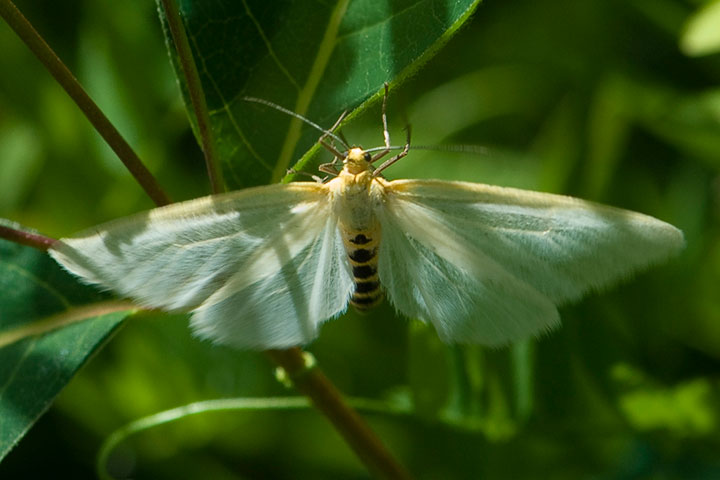 This tiger moth belongs to the species Cycnia tenera (Delicate cycnia). It was active in the daytime (same as above).
This tiger moth belongs to the species Cycnia tenera (Delicate cycnia). It was active in the daytime (same as above).
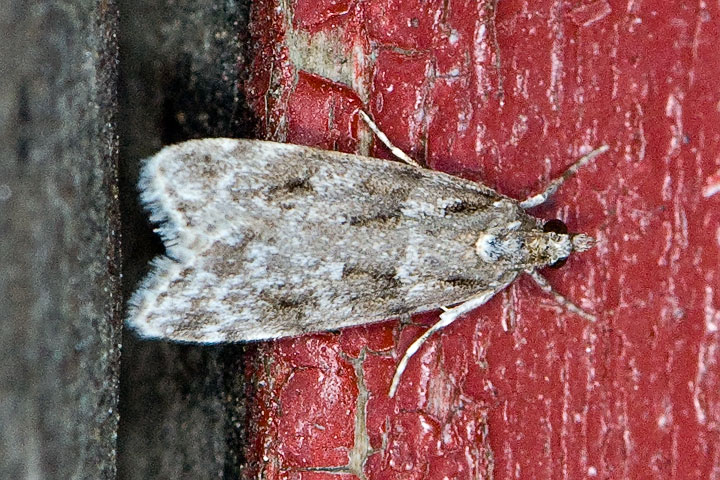 A Dioryctria sp (family Tortricidae) moth was out in the daytime.
A Dioryctria sp (family Tortricidae) moth was out in the daytime.
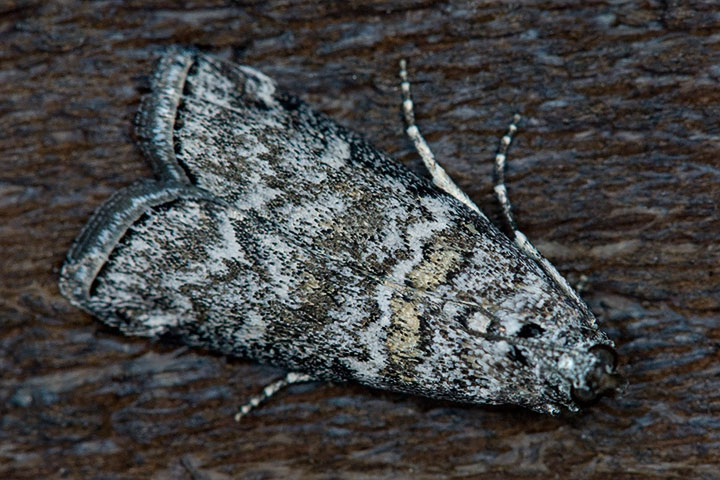 unidentified.
unidentified.
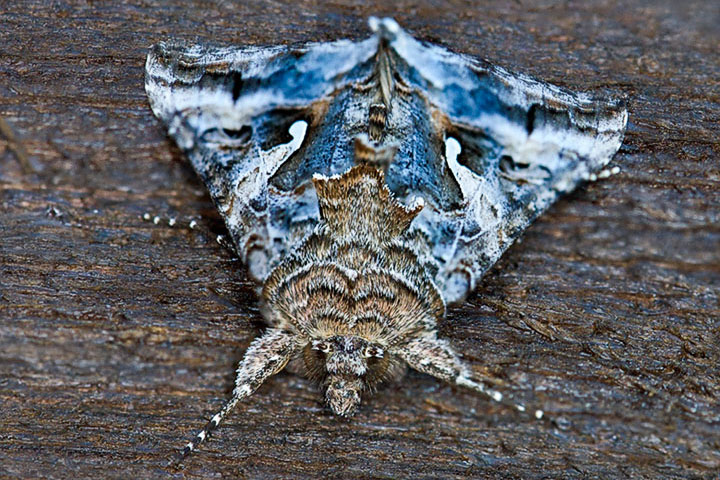 This oblique view of the Alfalfa Looper Moth (Autographa californica) shows two striking features: the face mask; iridescent blue wings. This blue is not seen in the view looking down on the wings (below).
This oblique view of the Alfalfa Looper Moth (Autographa californica) shows two striking features: the face mask; iridescent blue wings. This blue is not seen in the view looking down on the wings (below).
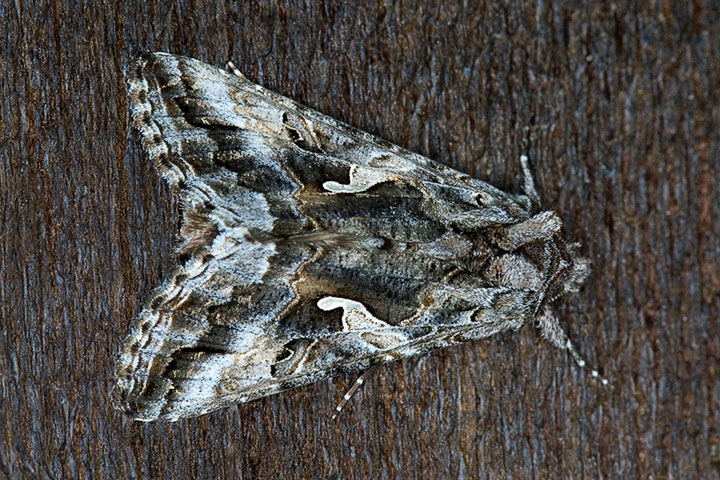 The Alfalfa Looper Moth (Autographa californica) is easily identified by the white markings on its wings.
The Alfalfa Looper Moth (Autographa californica) is easily identified by the white markings on its wings.
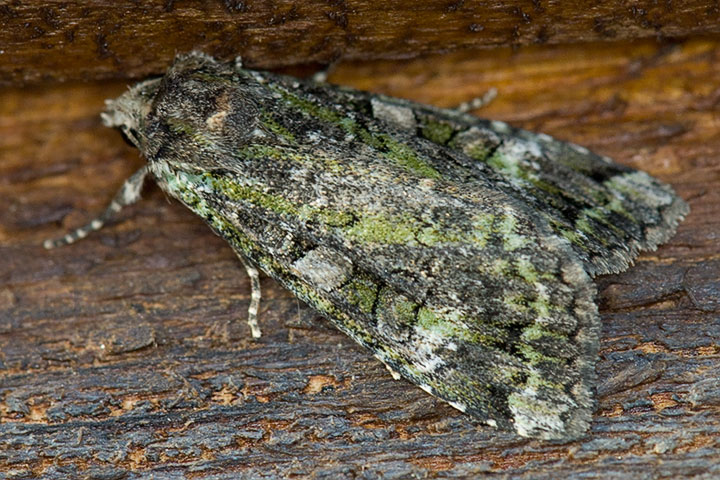 A Green Arches (Anaplectoides prasina) moth. A species found mainly in deciduous woodland.
A Green Arches (Anaplectoides prasina) moth. A species found mainly in deciduous woodland.
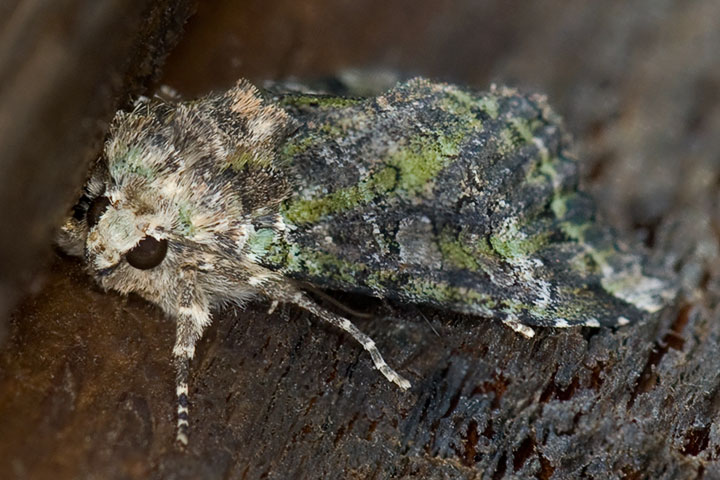 A Green Arches (Anaplectoides prasina) moth. The wing pattern serves to enable it to remain concealed by day often on the trunks of trees.
A Green Arches (Anaplectoides prasina) moth. The wing pattern serves to enable it to remain concealed by day often on the trunks of trees.
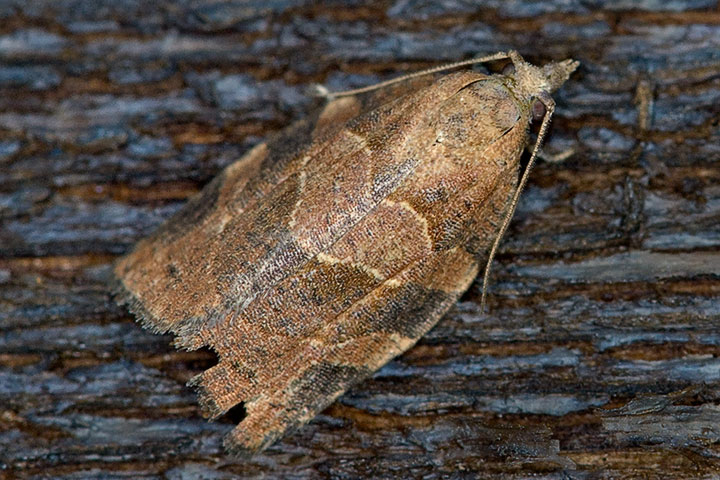 A brown tortricid (leaf-roller) moth.
A brown tortricid (leaf-roller) moth.
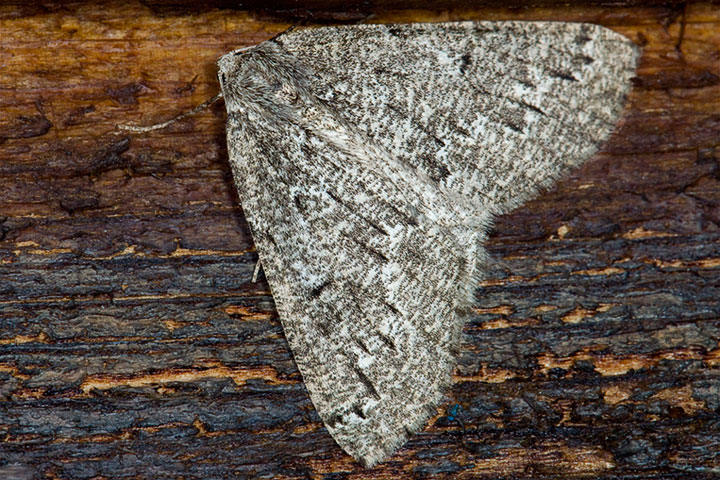 An unidentified moth.
An unidentified moth.
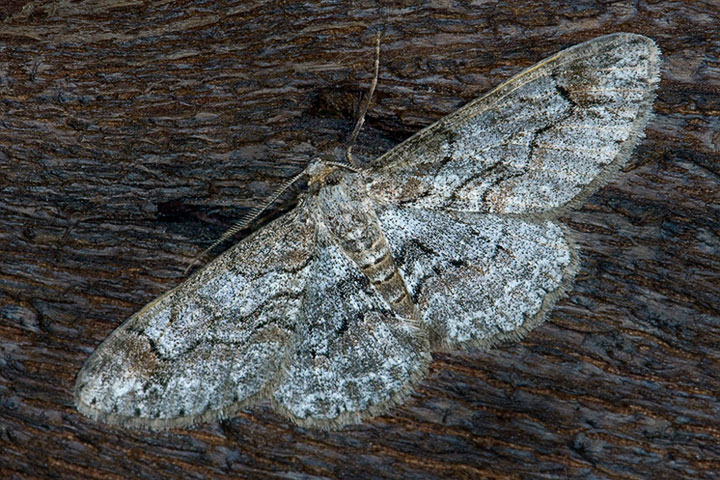 A Bent-line Gray Moth, Iridopsis larvaria (Geometridae family).
A Bent-line Gray Moth, Iridopsis larvaria (Geometridae family).
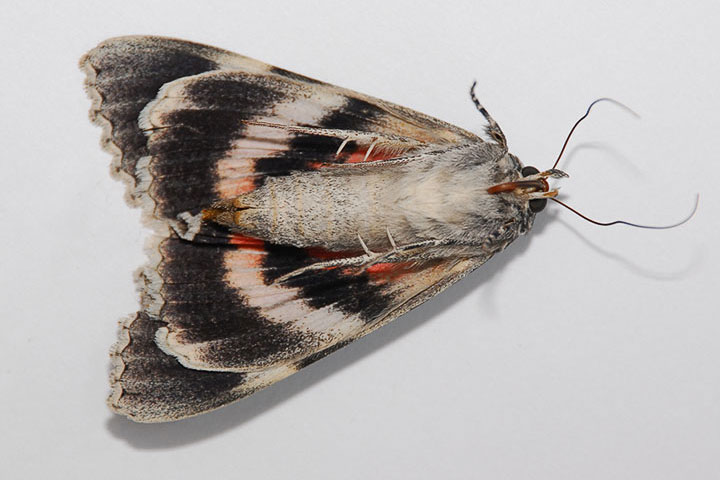 This is the underside of the Underwing moth seen to the right.
This is the underside of the Underwing moth seen to the right.
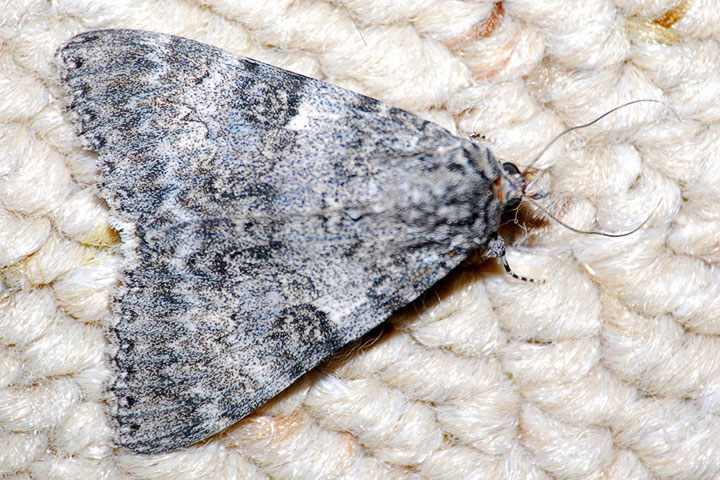 This is an Underwing moth, likely a Catocala faustina. The forewings seen here provide a good camouflage with the bark of a tree upon which the moth might be resting. The hind wings, seen in the image to the left from underneath, can be be spread to startle any bird which discovers it.
This is an Underwing moth, likely a Catocala faustina. The forewings seen here provide a good camouflage with the bark of a tree upon which the moth might be resting. The hind wings, seen in the image to the left from underneath, can be be spread to startle any bird which discovers it.
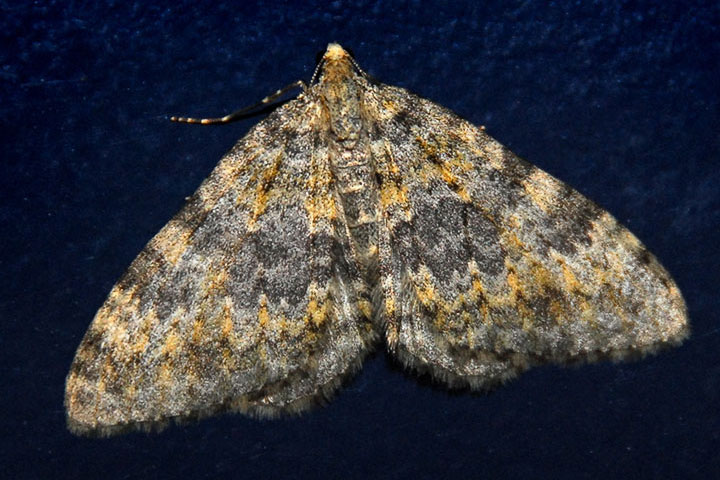 This may well be another species of Underwing.
This may well be another species of Underwing.
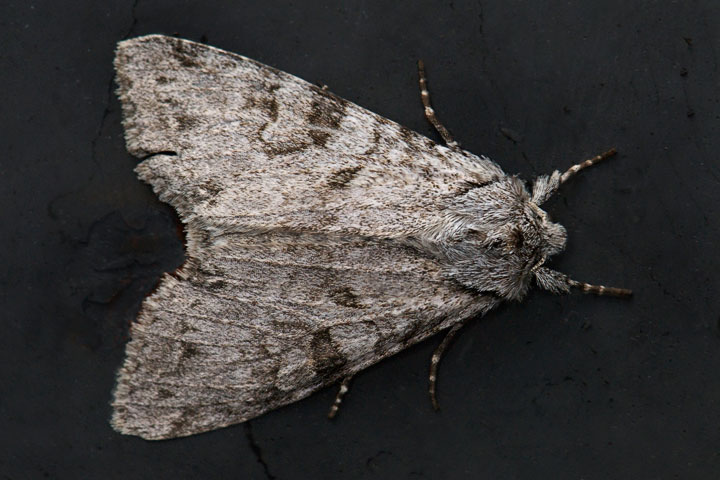 This is the dorsal view of what is likely a Polia piniae.
This is the dorsal view of what is likely a Polia piniae.
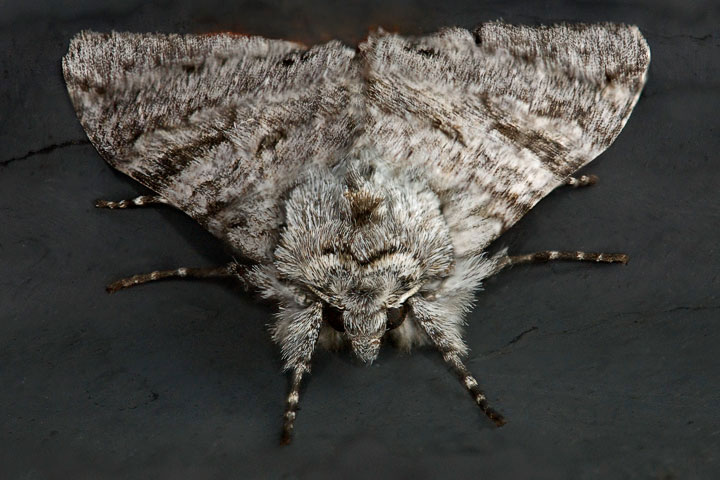 An oblique view of the same Polia piniae as above.
An oblique view of the same Polia piniae as above.
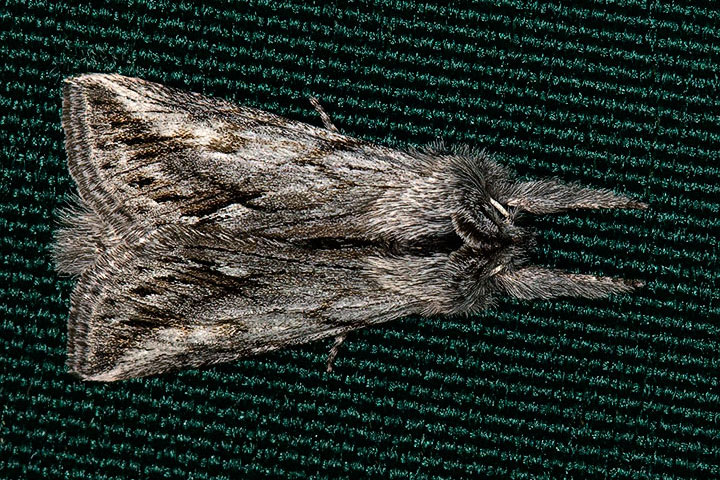 unidentified
unidentified
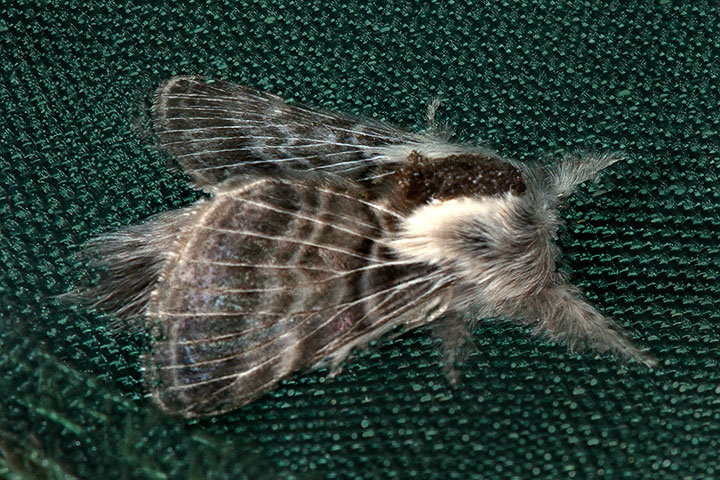 A somewhat side view of a female Day’s Lappit Moth. The larva of this moth defoliate trees, particularly the Douglas fir, but they don’t cause much damage.
A somewhat side view of a female Day’s Lappit Moth. The larva of this moth defoliate trees, particularly the Douglas fir, but they don’t cause much damage.
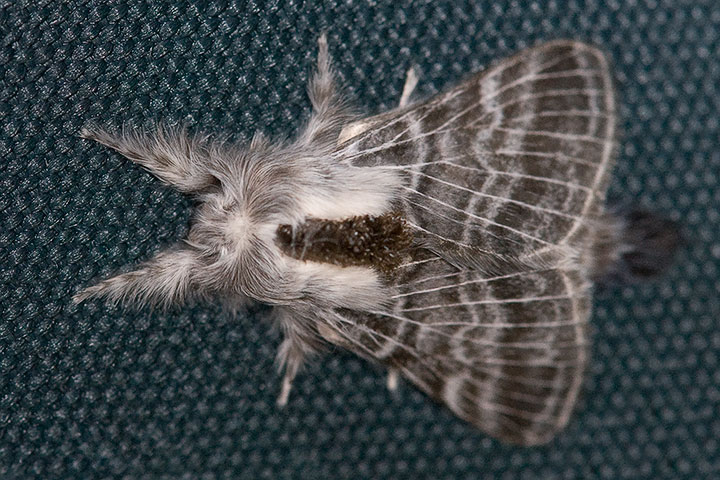 This is the dorsal view of a Day’s Lappit Moth, Tolype dayi. There are two species of Tolype found in BC; the other the Larch Lappet Moth, Tolype laricis, is much darker.
This is the dorsal view of a Day’s Lappit Moth, Tolype dayi. There are two species of Tolype found in BC; the other the Larch Lappet Moth, Tolype laricis, is much darker.
 This seems to be member of a group known variously as: grass moths (because of what they eat), snout moths (because of how they look); Pyralidae (their family name). In particular, this one seems to be the Vagabond Crambus Moth, Agriphila vulgivagella, larvae of which feed on the tender roots of young grass.
This seems to be member of a group known variously as: grass moths (because of what they eat), snout moths (because of how they look); Pyralidae (their family name). In particular, this one seems to be the Vagabond Crambus Moth, Agriphila vulgivagella, larvae of which feed on the tender roots of young grass.
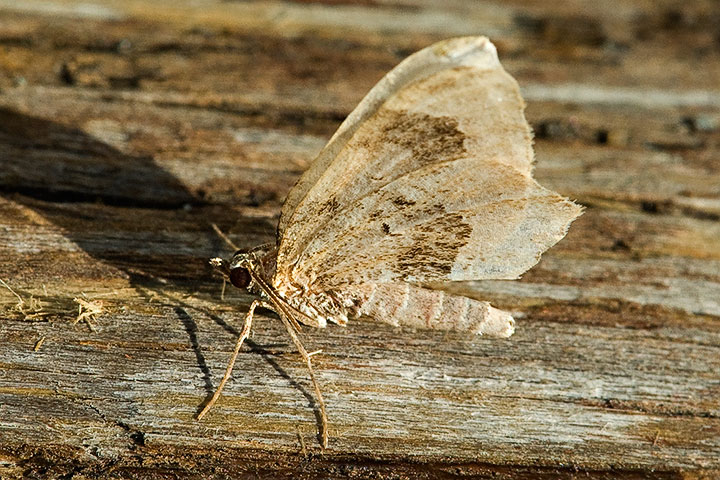 unidentified
unidentified
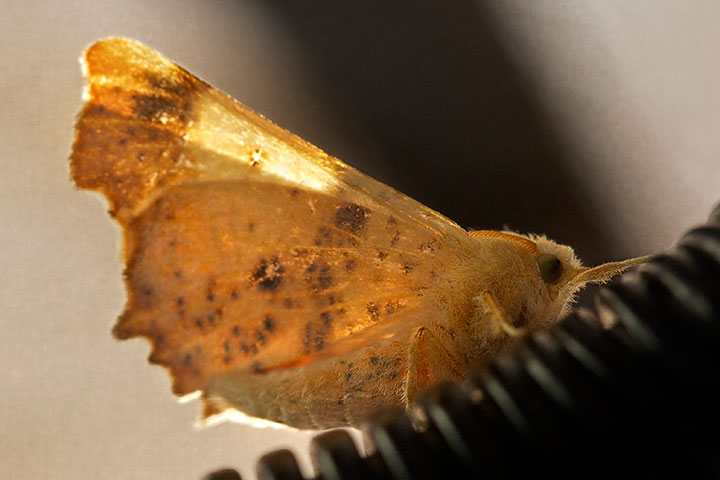 The Notched Wing Moth, Ennomos magnaria, has speckled, yellow-brown wings with an unevenly edge, a pattern which provides camouflage in the late summer and fall when a bird might mistake it for an autumnal leaf. The larva feed on deciduous trees and shrubs, particularly white birch and trembling aspen.
The Notched Wing Moth, Ennomos magnaria, has speckled, yellow-brown wings with an unevenly edge, a pattern which provides camouflage in the late summer and fall when a bird might mistake it for an autumnal leaf. The larva feed on deciduous trees and shrubs, particularly white birch and trembling aspen.
![]()